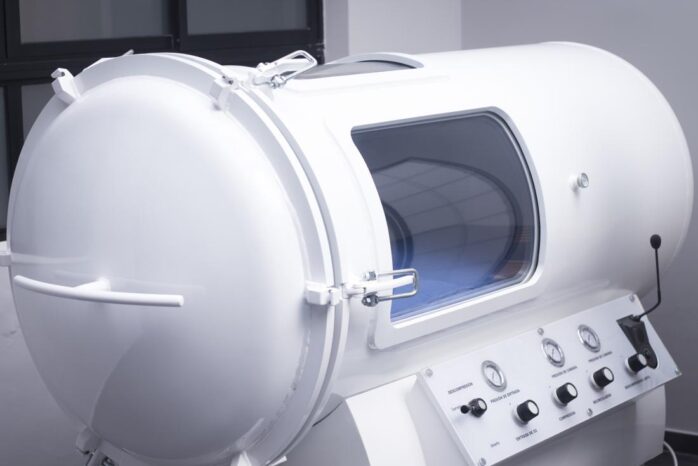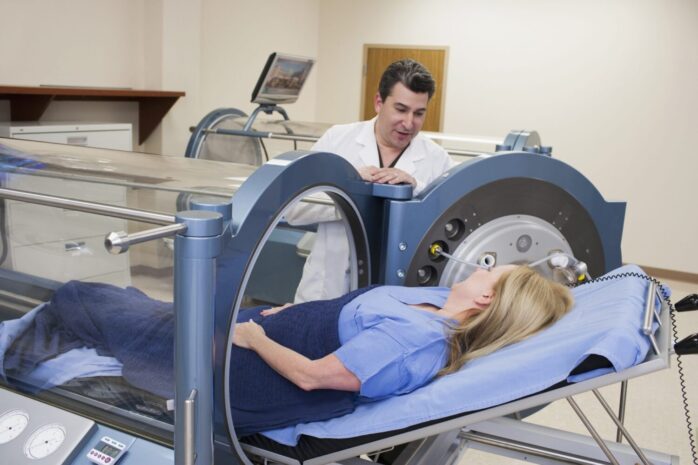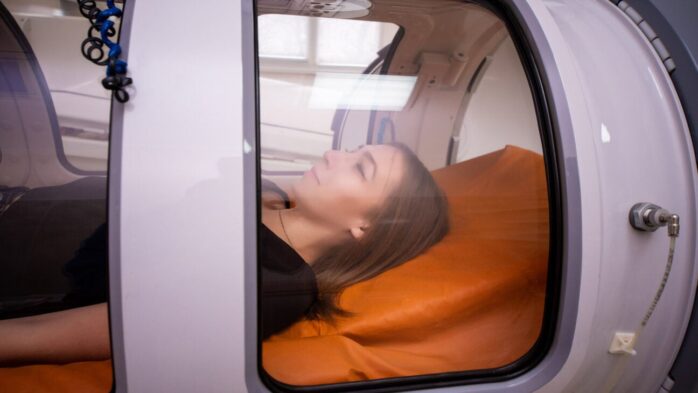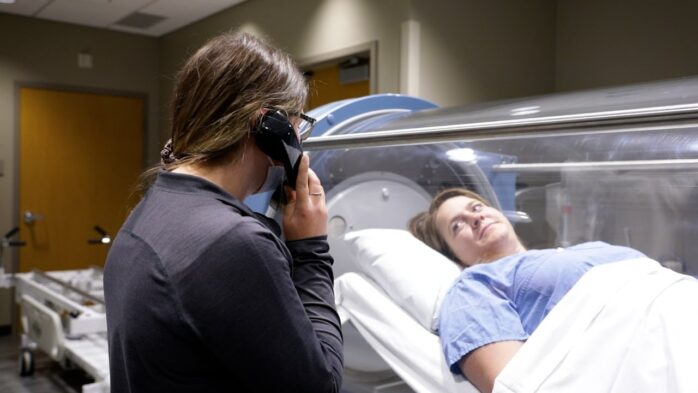Hyperbaric oxygen therapy (HBOT) represents an advanced medical procedure where patients breathe pure oxygen in a pressurized room or chamber. Its primary goal is to boost the amount of oxygen your blood can carry, thereby promoting healing and fighting infection.
HBOT is recognized for its efficacy in treating a variety of medical conditions, from serious infections to chronic wounds.
However, like any medical treatment, it’s critical to discern when this therapy is beneficial and when it might be potentially harmful or unnecessary.
The Science Behind Hyperbaric Oxygen Therapy

At the core of hyperbaric oxygen therapy lies the principle of increasing atmospheric pressure, which in turn increases the amount of oxygen your lungs can gather. Under normal conditions, oxygen is transported throughout the body only by red blood cells.
However, with HBOT, oxygen is dissolved into all of the body’s fluids, including the plasma, the central nervous system fluids, the lymph, and the bone, which allows it to be carried to areas where circulation is diminished or blocked.
This extra oxygen can enhance tissue function and aid in the healing of damaged areas by encouraging the formation of new blood vessels and aiding in the fight against infection.
Ideal Scenarios for Utilizing Hyperbaric Oxygen Therapy
Hyperbaric Oxygen Therapy, commonly referred to as HBOT, finds its ideal scenarios in specific medical conditions where it can make a significant difference.
One of its primary applications is in the treatment of decompression sickness, a condition often encountered by divers.
This ailment occurs when divers ascend too rapidly, leading to the formation of nitrogen bubbles in their bloodstream. In such cases, the hyperbaric chamber becomes a critical tool, as it aids in reducing the size of these bubbles and expedites their removal from the bloodstream.
Another vital role of the hyperbaric chamber is in the treatment of severe infections, such as gangrene and flesh-eating diseases.
The therapy’s effectiveness lies in its ability to administer high levels of oxygen, which can impede the growth of specific bacteria and bolster the body’s natural defenses against infections.
When Hyperbaric Oxygen Therapy Should Be Avoided
Despite its benefits, HBOT is not suitable for everyone. Patients with certain types of lung diseases, such as chronic obstructive pulmonary disease (COPD) with high levels of carbon dioxide in their blood, may be at risk of complications from the therapy.
Additionally, individuals with specific heart conditions, untreated heart failure, or certain congenital heart diseases may find HBOT more risky.
The therapy is also not recommended for individuals who have recently experienced ear surgery or trauma, as the changes in pressure can exacerbate their conditions. Likewise, people with severe claustrophobia may find it challenging to undergo treatment in the enclosed space of a hyperbaric chamber.
Preparing for Hyperbaric Oxygen Therapy

Before you can undergo HBOT, a thorough medical evaluation is essential to ascertain your suitability for the treatment.
This evaluation often includes a comprehensive review of your medical history, a physical examination, and possibly additional tests to assess your overall health status and the specific condition being treated.
Understanding the Risks of Hyperbaric Oxygen Therapy
While HBOT is generally considered safe, it does come with potential risks and side effects. These can include middle ear injuries, resulting from the increased air pressure, sinus problems, and, in rare cases, oxygen toxicity.
Patients might also experience temporary vision changes following treatment. These risks underscore the importance of a thorough medical evaluation before beginning therapy and continuous monitoring during treatment.
The Process of Hyperbaric Oxygen Therapy
During an HBOT session, you will either lie or sit in a specially designed hyperbaric chamber. This chamber is then sealed, and the air pressure inside is slowly and carefully increased, often to two to three times the normal air pressure.
During the session, which can last from 30 minutes to two hours depending on your specific treatment plan, you will breathe normally.
The increased pressure allows your lungs to gather up to three times more oxygen than would be possible breathing pure oxygen at normal air pressure.
What to Expect and Long-Term Care

Following an HBOT session, it’s not uncommon to feel slightly tired or lightheaded. This is typically a transient effect and resolves quickly. It’s advisable to drink plenty of fluids and rest as needed after the session.
Your doctor will provide specific instructions on post-therapy care, which may include measures to monitor your condition and manage any side effects.
Hyperbaric Oxygen Therapy: A Tool for Enhanced Healing
The remarkable aspect of hyperbaric oxygen therapy is its ability to enhance the body’s natural healing processes.
By providing high levels of oxygen to tissues that are oxygen-starved due to injury or illness, HBOT can significantly accelerate recovery.
This makes it an invaluable tool in the arsenal of treatments for a variety of conditions, from life-threatening infections to chronic wounds.
Patient Experience During Hyperbaric Oxygen Therapy
Undergoing HBOT is a unique experience. Patients typically report a sensation of fullness in their ears, similar to what is felt during an airplane’s ascent and descent, as the pressure in the chamber changes.
Most hyperbaric facilities take great care to ensure patient comfort and safety during the session.
Patients can usually relax, listen to music, or even watch TV in some chambers. The staff is always on hand to assist with any discomfort or anxiety and to monitor the patient’s response to the treatment.
Research and Advancements in Hyperbaric Oxygen Therapy
The field of hyperbaric medicine is continually evolving, with ongoing research into new applications of the therapy.
Recent studies are exploring the use of HBOT in treating neurological conditions, such as stroke and traumatic brain injuries, with some promising results.
As research expands, the list of conditions treated with HBOT will likely grow, offering hope to patients with conditions that are currently difficult to treat.
End Note

In summary, hyperbaric oxygen therapy is a sophisticated and valuable medical treatment with a range of applications. Its efficacy in accelerating healing and fighting infection makes it a vital component in the treatment of various conditions.
However, its use should be carefully evaluated against potential risks and contraindications. With ongoing research and advancements, HBOT continues to offer new possibilities in the realm of medicine, enhancing the healing journey for many patients.



















